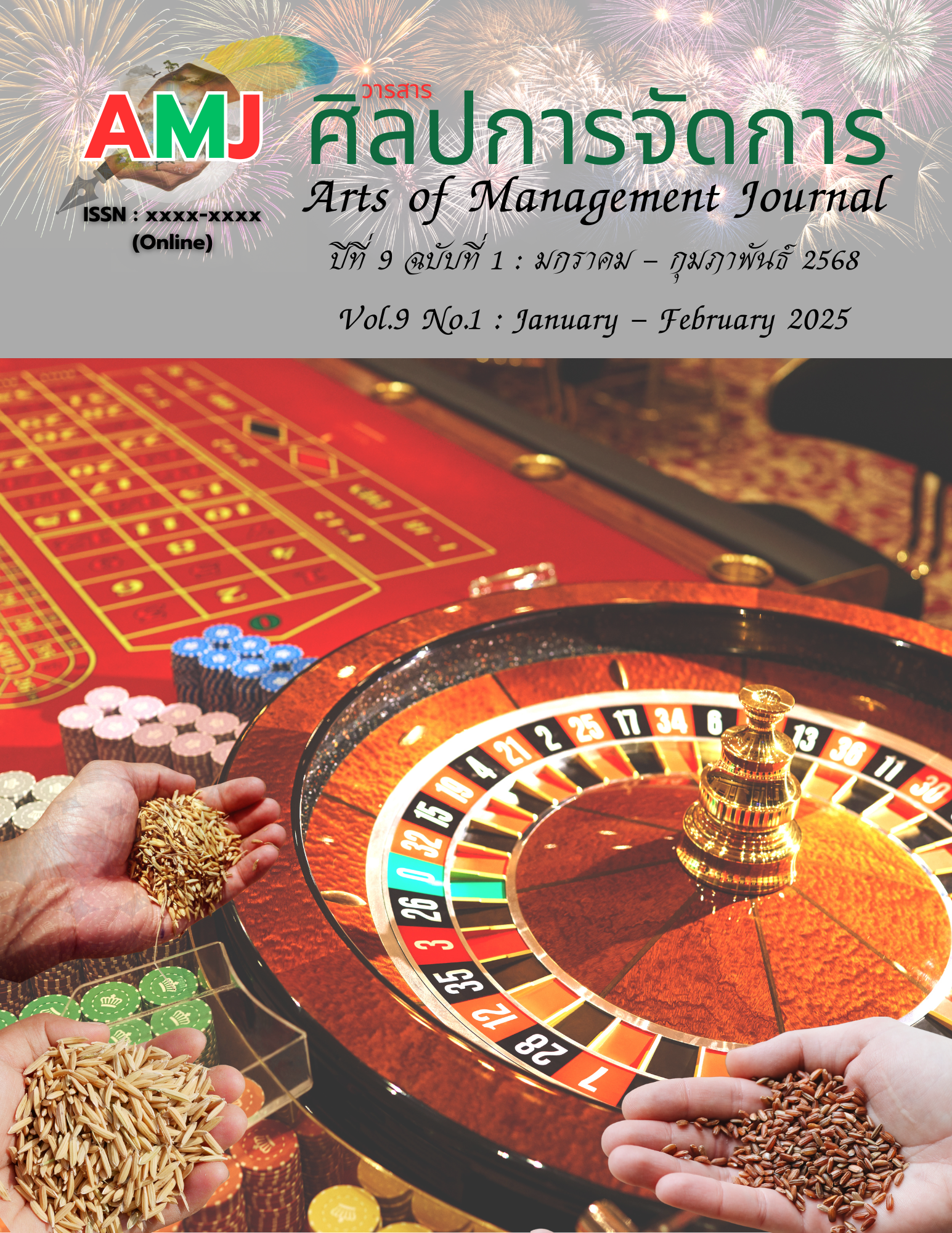Comparison of Education and Income Levels of the Elderly in Relation to Self-directed Learning Through Technology to Foster Development in the 21st Century Aging Society
Main Article Content
Abstract
The purposes of the mixed-method study are twofold: 1) Investigate the factors and examine the levels of self-learning through technology among the elderly and 2) Explore the impact of educational background and income on self-directed learning through technology. A self-directed learning guideline was also developed to specifically address older adults' needs. The data were collected from 405 elders living in selected areas across Bangkok. The study employed purposive sampling, selecting five districts for data collection to represent the population effectively. Semi-structured interviews were conducted to triangulate the quantitative data. The results of a factor analysis showed that the factors for self-directed learning through technology among the elderly consisted of six factors: 1) Management skills, 2) Open-mindedness, 3) Self-development, 4) Self-reliance, 5) Discipline, and 6) Self-confidence. In addition, the average level of self-directed learning through technology among the elderly is high. The factor with the highest level is open-mindedness, followed by self-development and self-reliance, respectively. The results from One-way ANOVA analysis suggest that older adults with varying education levels demonstrate differences in management skills, open-mindedness, self-reliance, and self-confidence when engaging in self-directed learning through technology. Additionally, income levels significantly influence the use of technology for learning, with higher income providing better access to resources. The suggested guideline also recommends that organizations promote the importance of technology-based learning, encouraging older adults to recognize the benefits of self-directed learning to support the development of an aging society in the 21st century. These will foster sustainable learning, promote self-sufficiency among the elderly, and enhance the aging society.
Article Details

This work is licensed under a Creative Commons Attribution-NonCommercial-NoDerivatives 4.0 International License.
Views and opinions appearing in articles in the Journal of Arts of Management It is the responsibility of the author of the article. and does not constitute the view and responsibility of the editorial team I agree that the article is copyright of the Arts and Management Journal.
References
Bureau of Registration Administration. (2024, October 29). Official statistics registration systems. https://stat.bora.dopa.go.th/stat/statnew/statMONTH/statmonth/#/displayData
Dahal, A., & Bhat, N. (2023). Self-directed learning, its implementation, and challenges: a review. Nepal Journal of Health Sciences, 3(1), 102–115. https://doi.org/10.3126/njhs.v3i1.63277
Fisher, M. J., & King, J. (2010). The self-directed learning readiness scale for nursing education revisited: A confirmatory factor analysis. Nurse Education Today, 30(1), 44–48. https://doi.org/10.1016/j.nedt.2009.05.020
Guglielmino, L. M. (1978). Development of the self-directed learning readiness scale. Dissertation Abstracts International Section A: Humanities and Social Sciences, 38(11-A), 6467.
Hase, S. & Kenyon, C. (2000). From andragogy to Heutagogy. Ultibase Articles, 5, 1-10.
Hiemstra, R. (1994). Self-directed learning. In Husen T. & Postlethwaite T. N. (Eds.), The international encyclopedia of education (2nd ed.). Pergamon Press.
Kleechaya, P. (2021). Digital technology utilization of elderly and framework for promoting thai active and productive aging. Journal of Communication Arts, 39(2), 56-78.
Knowles, M. (1975). Self-directed learning: a guide for learners and teachers. Association Press.
Lai, C. (2014). Enhancing learners’ self-directed use of technology for language learning: The effectiveness of an online training platform. Computer Assisted Language Learning, 29. https://doi.org/10.1080/09588221.2014.889714
Li, N. (2023). Analysis of the impact of family education level on household income: a study based on the CHFS database. International Journal of Accounting and Finance Studies, 6(1), 50. https://doi.org/10.22158/ijafs.v6n1p50
Lutz, W., Sanderson, W.C., & Scherbov, S. (2008). Global and regional population ageing: How certain are we of its dimensions?. Journal of Population Ageing, 1(1), 75-97.
Maestas, N., Mullen. K., & Powell, D. (2023). The effect of population aging on economic growth, the labor force and productivity. American Economic Journal: Macroeconomics, 15(2), 306-332.
Malison, K. (2022). Elderly’s acceptance to adopt information system: mobile websites and applications for hotel and accommodation reservation. Asian Administration and Management Review, 5(2), 47–55.
Ministry of Education. (2023, January). Annual report 2022. https://www.moe.go.th
Morrison, D., & McCutheon, J. (2019). Empowering older adults’ informal, self-directed learning: harnessing the potential of online personal learning networks. Research and Practice in Technology Enhanced Learning, 14(10). https://doi.org/10.1186/s41039-019-0104-5
Nochot, B. (2021). Experience and technology acceptance of post-retirement people in Bangkok and Metropolitan area that affected willingness to use e-book[Master's Thesis, Silpakorn University].
Roberson, D. N., & Merriam, S. B. (2005). The self-directed learning process of older, rural adults. Adult Education Quarterly, 55(4), 269-287. https://doi.org/10.1177/0741713605277 372
Rodkhem, R., & Chaiprasit, S. (2019). Ageing society: technology and the elderly. EAU Heritage Journal Science and Technology, 13(2), 36–45.
Taber, K.S. (2018). The use of cronbach’s alpha when developing and reporting research instruments in science education. Research in Science Education, 48, 1-24. https://doi.org/10.1007/s11165-016-9602-2
Tirakoat, S., & Polnigongit, W. (2018). Internet usage behaviors, literacy, and attitude towards utilization of wellness content on the internet among Thai elderly. Journal of Nursing and Therapeutic Care, 36(1), 72-80.
Walker, A. (2002). A strategy for active aging. International Social Security Review, 55(1), 121-139. https://doi.org/10.1111/1468-246X.00067
Watakit, U. (2024). Study of experiences and acceptance of technology that affect intentions to use social media of the elderly in Khon Kaen Province. NEU Academic and Research Journal, 14(1), 133–146.
Valente, J. S. (2006). The role of self-directed learning in older adults’ health care. Adult Education Research Conference. https://newprairiepress.org/aerc/2006/papers/60
Vincek, V., Rogina Ž. K., & Bogataj, D. (2024). Impact of digital technology on the quality of life of older adults - literature review. IFAC-Papers Online, 58(3), 304-309. https://doi.org/10.1016/j.ifacol.2024.07.168
Yamane, T. (1967). Statistics: an introductory analysis (2nd ed.). Harper and Row.


